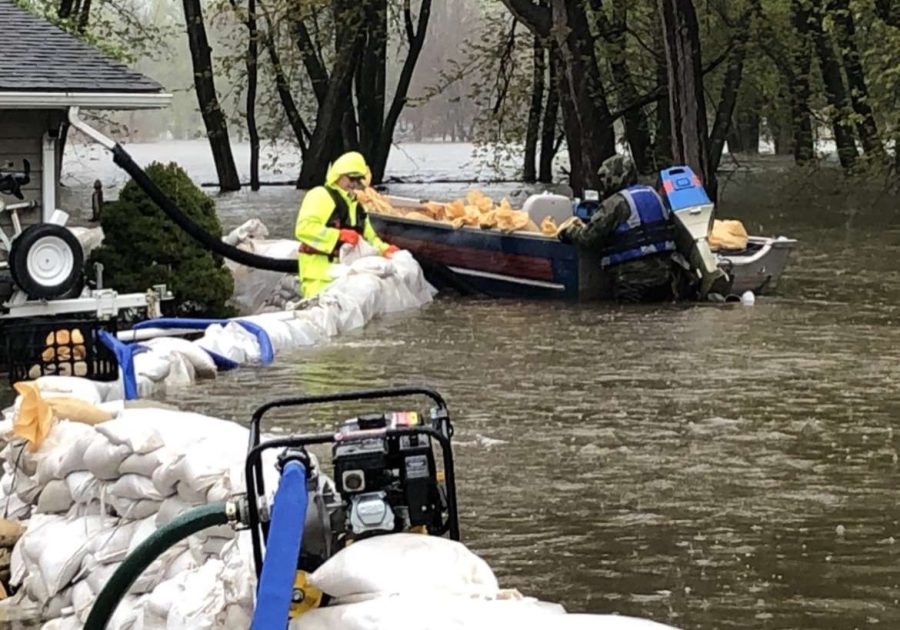Living near the Mississippi River can give local students and their families great views, but it is effectively part of the yard for those who live on its edge. When it comes to spring and summer activities–and precipitation–those who live near the river have a different lifestyle than those who live in landlocked neighborhoods.
While in the summer, living on the river can mean great boating days. However, it also comes with flooding risks. The National Weather Service has been recording river levels since 1942. Five of the 10 highest river crests in LeClaire, Iowa, have been since the year 2000, meaning flooding is becoming at least a little more common.
The already reached minor flood stage in late April, and has the potential to flood more this summer. Senior Natalie Carslake lives on the river and has been affected by high water levels. The flood in the spring of 2019 was during her freshman year.
“We spent most weekends sandbagging and it was about 45 days where the water was so high we were unable to drive to our houses.” Carslake said about the process of keeping homes in the neighborhood safe. The sandbags keep water from flooding into homes and causing massive damages.
The sandbags are effective in keeping floods out, yet the higher the water comes up on the wall the more force the water puts on it. The higher the water comes up on the wall, the more force it puts on it. Eventually, if the water becomes too high, the wall will break and the surrounding homes will be flooded. This can ruin flooring, break windows and destroy furniture.
Sandbagging can keep water out of homes, but it does not keep the water out of the streets. “We took flat bottom fishing boats and kayaks to and from our house everyday,” said Carslake. While it was a fun adventure in the beginning, it got more tedious to spend an extra hour getting ready every time she needed to leave the house.
The neighborhood bonded over the time because it was a struggle for all of the residents. The hard time allowed them to become close because they had to work together to get through it. The last crest of the river was where things became truly difficult for everyone in the neighborhood.
Carslake continued, “During the last crest of the flood, most people’s sandbag walls broke, including ours. Our garage was filled to about waist height.” Sometimes no matter what the family does, water will find a way.
Most families were able to keep some of their homes dry, but others in the neighborhood were not as fortunate.
The aftermath can be the hardest part about many natural disasters, including flooding. “There were many negative long lasting effects like ruined basements and muddy yards for months,” said Carslake. “Once the water went down, it took months to clean everything up. Our entire garage had to be cleaned along with everything in it.”
Some people moved away from the river because of the difficult experience. Those who stayed maintained the strong bond created during the flood. “Now, we are still so close to our neighbors and have hang outs every weekend,” commented Carslake.
“At the end of the day, the relationships formed in a time of need are so strong and being able to lean on each other was such an amazing thing,” she reflected. It was one experience Carslake will never forget and one shared by many who live near the river.
Flooding has a pronounced impact on the lives of those affected by it but is often overlooked by people living just blocks away from them. Understanding the way it can affect the lives of others and working to support them can create bonds that last a lifetime.









